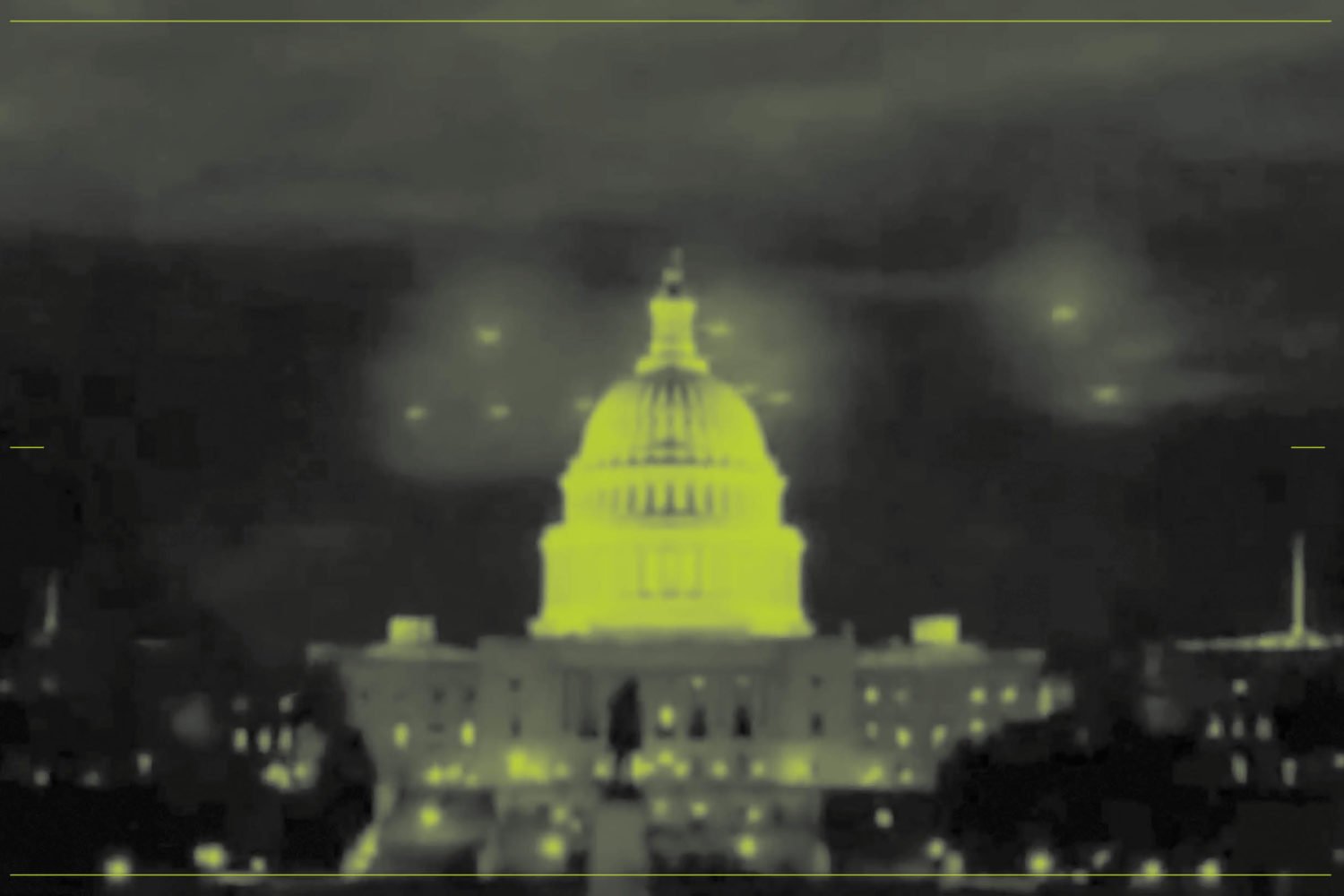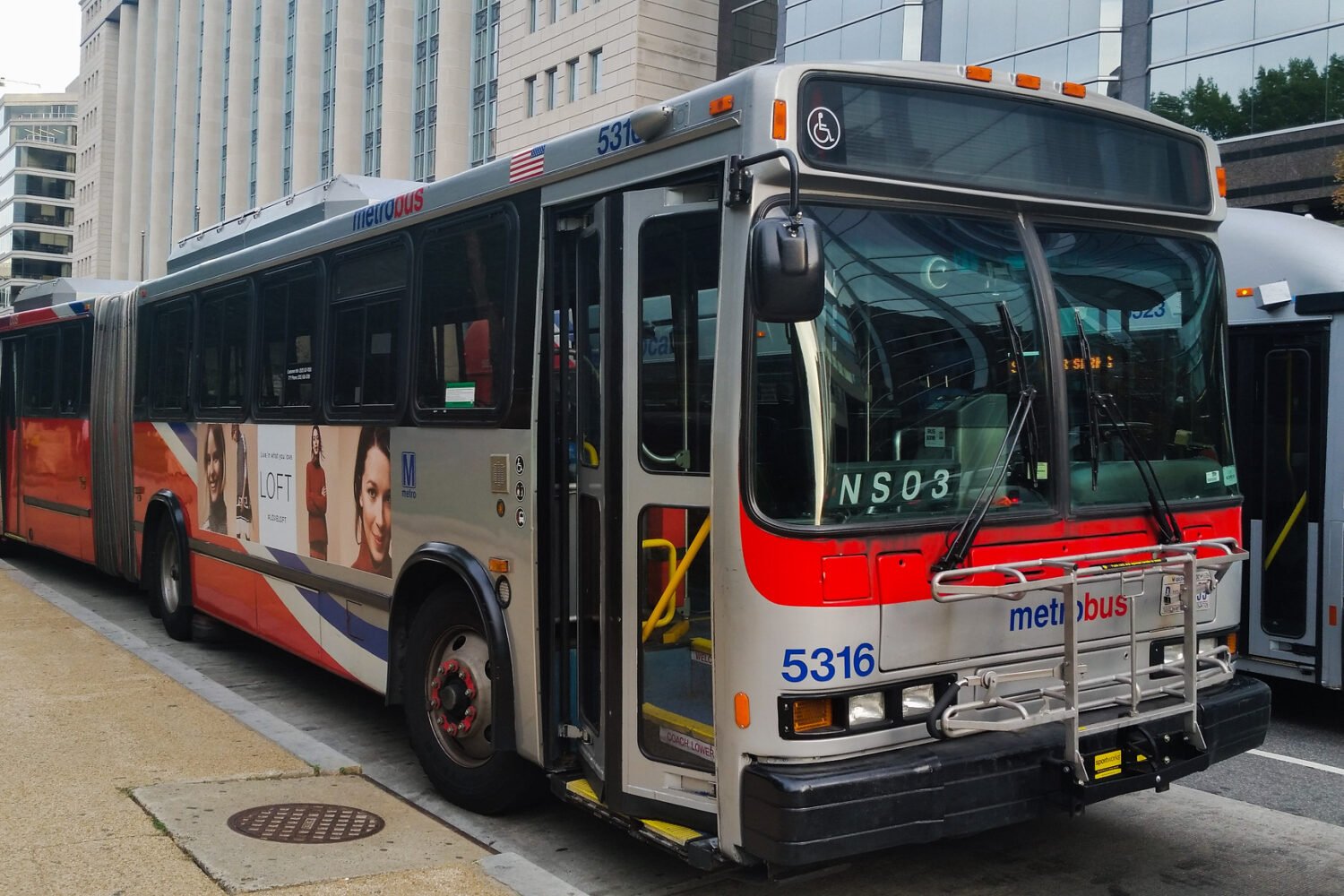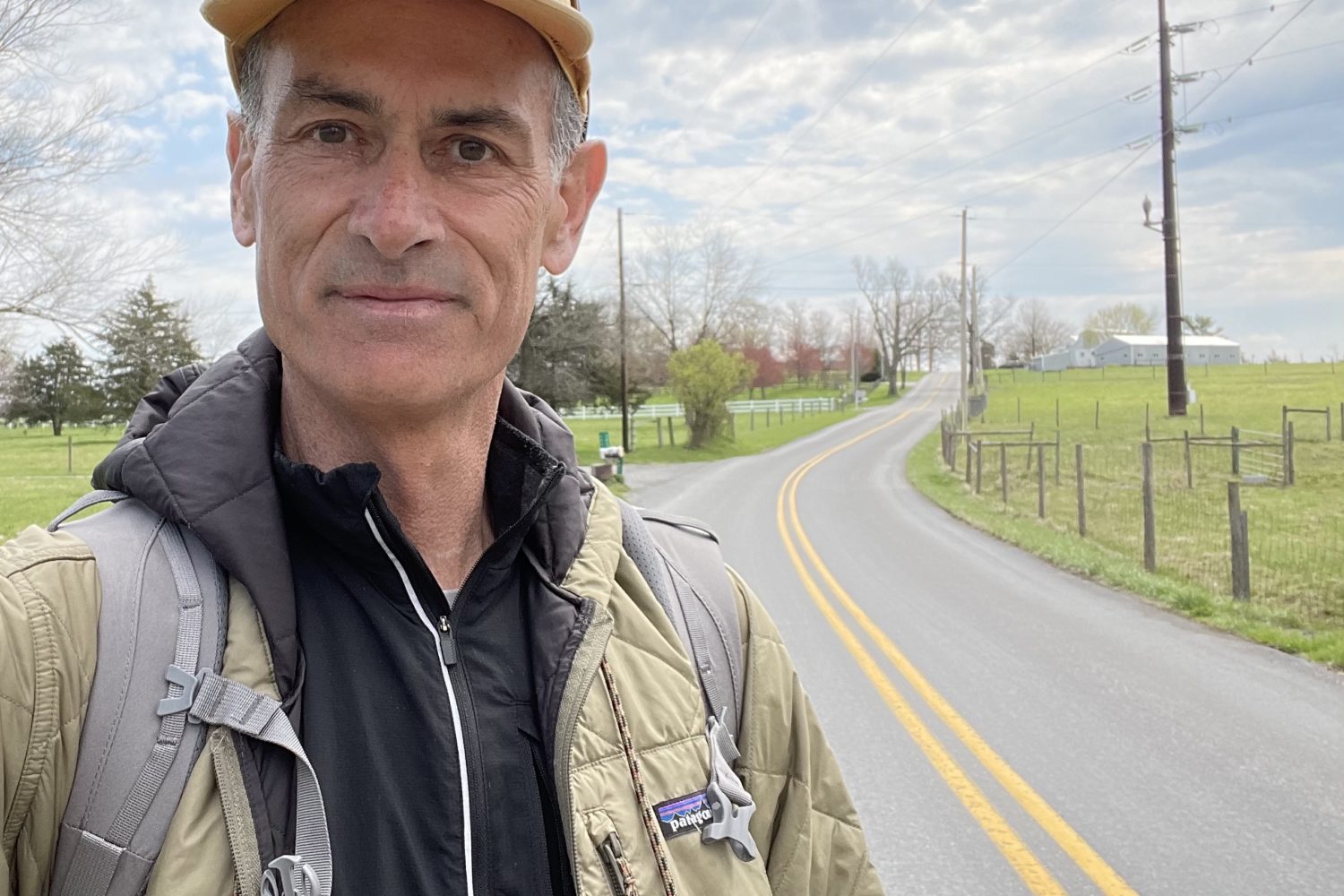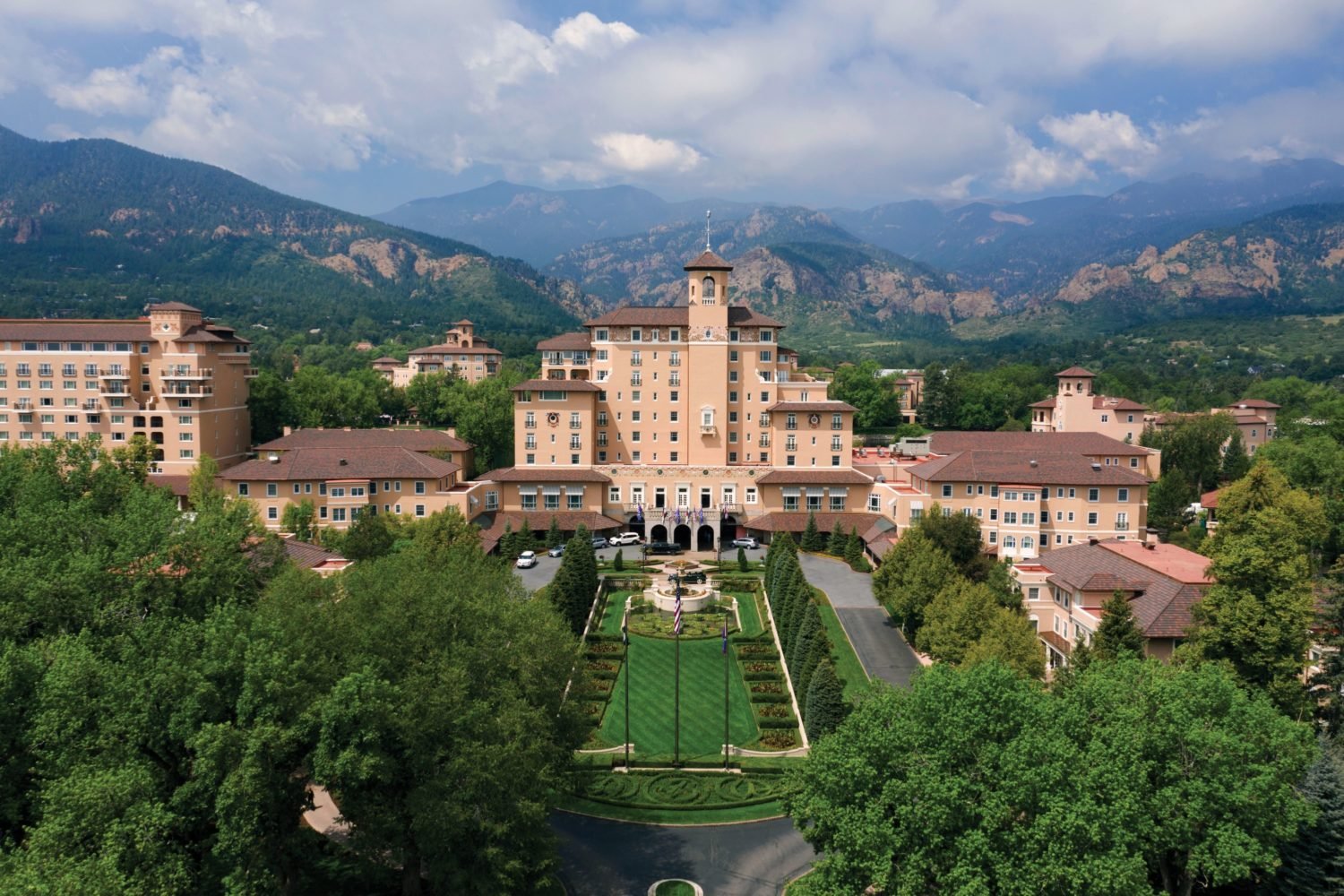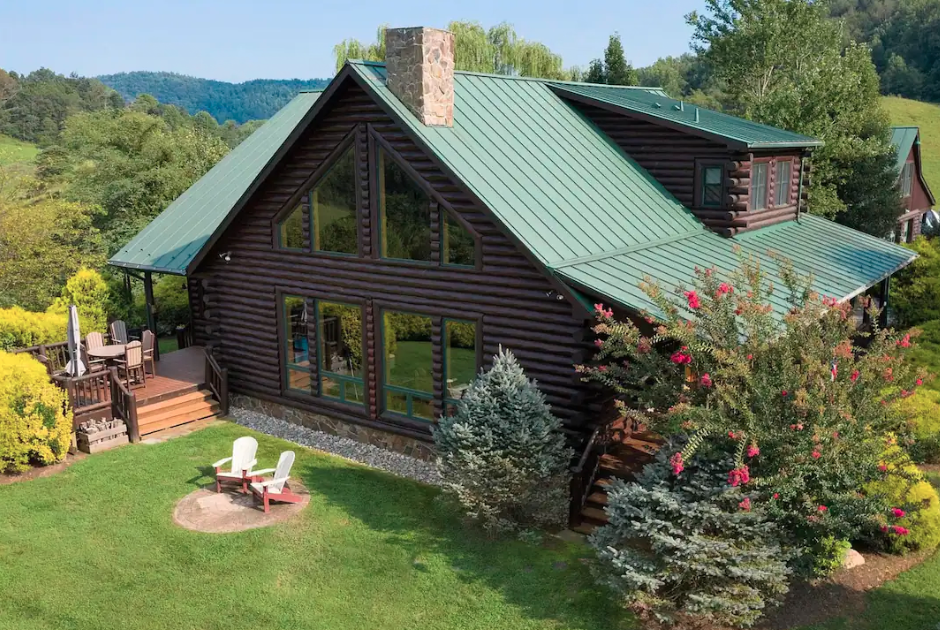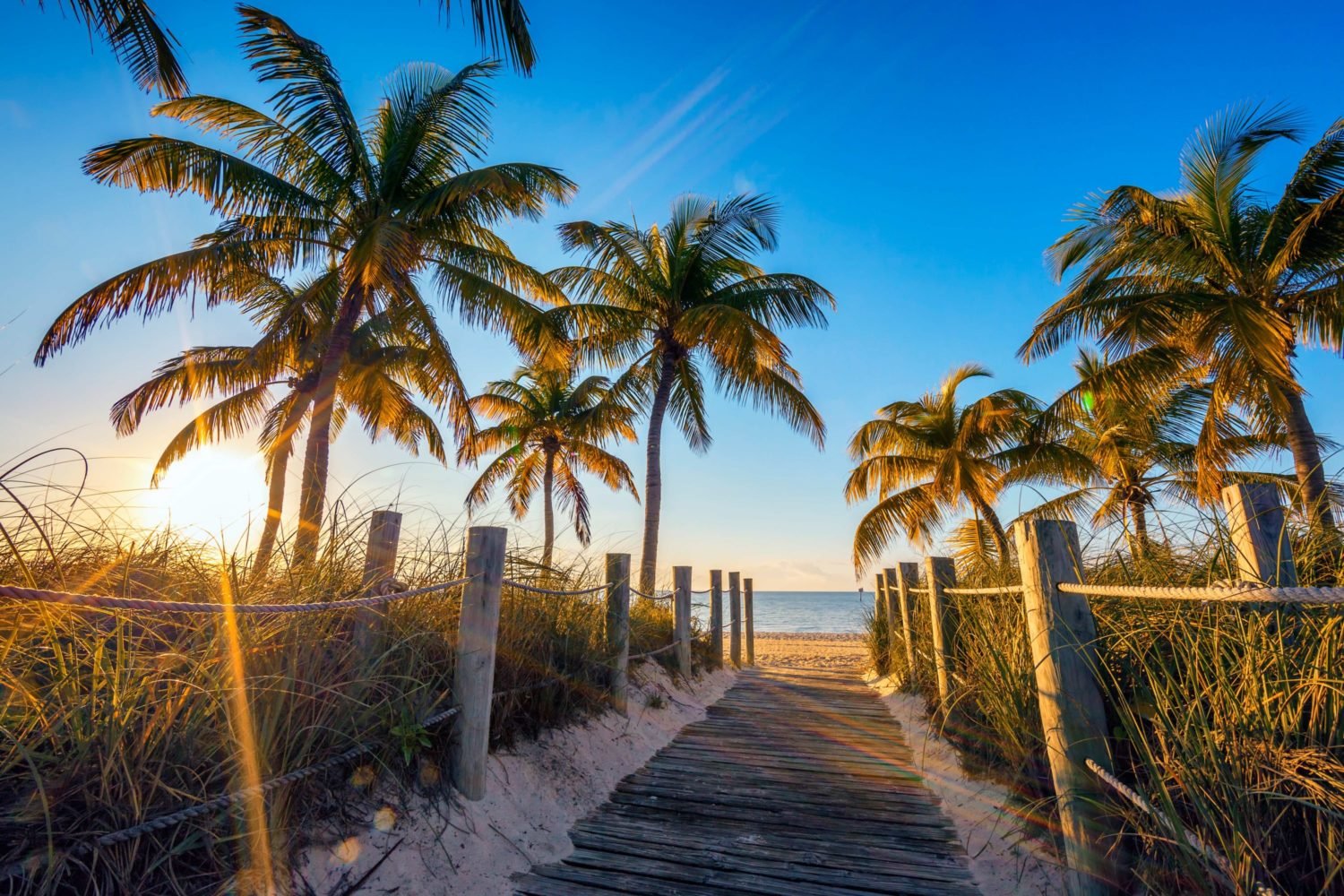Travel back in time
by spending the night in a lockhouse along the C&O
Canal. Completed in 1850, the 184-mile canal was once lined with
57 small houses where lock keepers and their families lived. The waterway
stopped operating in 1924, and the houses were abandoned. But in 2009, the
National Park Service began restoring a handful of them. Six lockhouses
can now be rented; all are brick or stone homes that are more than 170
years old and can sleep eight. The most modern are Lockhouse 6, near
Brookmont, and Lockhouse 10, near Cabin John, which have kitchens and
central air. Prices range from $70 to $150 per night.
canaltrust.org
Laugh till you cry
at an after-hours storytelling event. Modeled
after the New York City event called The Moth (heard on NPR), local
storytelling gatherings are gaining popularity and can be a great way to
break out of a nightlife rut. SpeakeasyDC (speakeasydc.com) draws a crowd each month to various venues with topics such as “bad mommy moments” and
“stories about sex,” and the group vets performers before each show. Story
League (storyleague.org) is more casual–anyone can submit a story online or in person at the beginning of the night–but just as much fun. Arrive
early to get a seat, then settle in as Washingtonians bare their souls and
tell entertaining tales about everything from security clearances to
online dating. Check the websites for schedules, locations, and
prices.
Dig for buried treasure
at Gunston Hall, George Mason’s 18th-century
estate in Fairfax County. The staff gives volunteers tools and basic
archaeological training, then lets them go to work. Among the many
artifacts that been have found are coins, glass jewelry beads, and a
two-tined fork with a bone handle from the 1760s. The field season goes
from April to December; in the winter, volunteers can work in the lab,
dating and categorizing unearthed objects. The house, designed in
Chesapeake Georgian style, is also worth a visit. The intricate carvings
in the Palladian Room are marvelous, and Mason’s writing desk sits in the
Little Parlor. 703-550-9220; gunstonhall.org.
Experience the thrill of rock-climbing
at Mather Gorge in Great Falls. The cliffs may
be only 60 feet high, but with sheer and overhanging rock faces leading
down to the roaring rapids of the Potomac River, the vertical slabs of
Mather Gorge serve up the same sense of exposure and high adrenaline as a
climb of 1,000 feet. A four-to-six-hour introductory climbing lesson
through Go-Adventures includes rope handling, belaying, rappelling, and
climbing techniques. Admission $125 for individuals; $80 per person for
groups of four or more. 240-603-4150; go-adventuresports.com
Outsmart the crowds
and see cherry blossoms in a more natural setting at the
National Arboretum. While tourists pack the Mall, you can
cruise nine miles of less traveled roads by car, bike, or foot and see
thousands of cherry trees on hillsides and throughout meadows. On 446
acres in Northeast DC, the Arboretum is home to 600-plus varieties of
cherry trees in colors ranging from white to deep pink. Free.
202-245-2726; usna.usda.gov
Take in a panoramic view
at the Air Force Memorial, less than a mile
from the Pentagon in Arlington. Since opening in 2006, the soaring,
three-spired memorial–set on a promontory overlooking the monuments and
designed to resemble a flying maneuver called the “bomb burst”–has become
a fixture along Washington’s skyline. Below, you’ll see the Pentagon and
the white rows of Arlington National Cemetery. Across the Potomac are the
Lincoln Memorial, Washington Monument, and Capitol. It’s a particularly
good spot to watch the Fourth of July fireworks. 703-979-0674;
airforcememorial.org
Walk in a foreign dignitary’s shoes
on a tour of the Diplomatic Reception Rooms at
the State Department, a collection of 42 rooms used by the Secretary of
State, the Vice President, and Cabinet members to entertain world leaders.
The tour takes you into seven rooms, including the Franklin Dining Room,
where the carpet is so large that it had to be brought in by cranes. What
makes this tour special is the magnificent collection of early-Americana
art and furnishings such as the desk where Benjamin Franklin, John Adams,
and John Jay signed the Treaty of Paris in 1783, the mahogany desk where
Thomas Jefferson wrote parts of the Declaration of Independence, and a
silver bowl made by Paul Revere. Free. 202-647-3241;
diplomaticrooms.state.gov
Ride an old-fashioned streetcar
at the National Capital Trolley Museum in
Colesville. The depot-like visitors center brings a sense of whimsy to
public transportation with a miniature model of the old trolley line on
Connecticut Avenue, called the Rock Creek Electric Railway, and a
collection of real trolleys from places including Germany, Canada,
Belgium, and New York. An exhibit on streetcars in the movies features a
silent movie highlighting streetcar action and the comedic exploits of
film legend Harold Lloyd. And commute to your heart’s content with
unlimited trips on the 20-minute trolley ride around Northwest Branch
Park. Adults $7, seniors and ages 2 to 17 $5. 301-384-6088;
dctrolley.org
Enjoy an infusion of drama
at Theater J’s Tea at 2 program, generally the
third Friday afternoon of every month. In the intimate library at the DC
Jewish Community Center, actors read new scripts that are in the works as
part of the theater’s play-development program for both emerging and
established playwrights. There’s tea, cookies, and the chance to discuss
the work with the actors and often a director. $5. 202-777-3210;
theaterj.org
Saddle up
for a pony ride at the Rock Creek Park Horse
Center. Known for horse rides catering to ages 12 and older, the
stable also offers 10-to-15-minute pony rides for younger kids along a
wooded mini-trail. Budding equestrians must be at least 30 inches tall.
Afterward, keep your little one smiling with a visit to the nearby Rock
Creek Park Nature Center for stories, animal feedings, and planetarium
shows. Horse Center: 202-362-0117, rockcreekhorsecenter.com. Nature
Center: 202-895-6070; nps.gov/rocr
Peak inside modernist treasures
during the Hollin Hills House & Garden Tour
April 28 from noon to 6. A neighborhood of 463 homes in
Alexandria, Hollin Hills offers the area’s richest collection of
midcentury-modern homes. Built in the 1950s and ’60s, the houses were
designed by local architect Charles Goodman. Large glass windows look onto
wooded, hilly lots–making a drive through the neighborhood feel more like
California than Virginia. During the biannual house tour, a collaboration
with the Corcoran Gallery of Art, 12 homes open their doors to the public.
Tickets $20 through April 15, $25 after. hollinhills.net.
Play heiress for an afternoon
and picnic in the lush gardens of Marjorie Merriweather Post’s
Hillwood Estate, Museum & Gardens in DC’s Forest
Hills neighborhood. You can bring your own basket of goodies or buy soups,
sandwiches, salads, cookies, brownies, and wine from Hillwood’s sunny
cafe. Picnic blankets are also on loan at the cafe and the visitors
center. Several designated picnic spots amid the 13 acres of gardens are
abloom with magnolia, lilac, dogwood, and tulips, but our favorite is a
verdant oasis behind the manse, known as the Lunar Lawn. Suggested
donation $15. 202-686-5807; hillwoodmuseum.org
Learn about the drug world
at the Drug Enforcement Administration Museum &
Visitors Center in Pentagon City. This small museum takes
visitors on a 150-year tour through the evolution of drug abuse in
America. You’ll learn that it was the Civil War, not Vietnam, that created
the first drug-addicted veterans. At the turn of the 20th century, common
maladies such as toothaches and coughs were treated with over-the-counter
drugs that contained cocaine, heroin, and morphine. You’ll see photographs
of opium dens, a diamond-encrusted gun confiscated from a Colombian
dealer, and a large collection of drug paraphernalia, including homemade
bongs, opium pipes, and chocolate-flavored rolling papers. Free.
202-307-3463; deamuseum.org
Find a rising star
at the spring show of works by graduating students at
the Corcoran College of Art & Design. This year’s exhibition,
the school’s second annual museum-wide student show, includes innovative
and interactive works by newly minted graduates April 14 through May 20.
Some commercial galleries around town, such as Conner Contemporary Art
(202- 588-8750; connercontemporary.com), mount student shows as well, offering art lovers the chance to spot a good young artist and buy a work
at relatively low cost. 202-639-1700; corcoran.org.
See the sofa where John Wilkes Booth was treated
at the Dr. Samuel A. Mudd House. Restored to
its 19th-century condition, the white clapboard house sits on a 197-acre
farm in Waldorf and looks much as it did the night Booth arrived there
after shooting President Abraham Lincoln on April 14, 1865. Docents in
period costumes give tours of the house and its outbuildings, one of which
is still used to dry tobacco. You’ll also see a collection of Mudd’s
medical instruments and a pair of tables he built in prison. You might
even meet some of his descendants, who live near the farm and help run the
museum. Adults $7, ages 16 and under $2. 301-274-9358;
somd.lib.md.us
Peek behind the curtain
at an open play rehearsal, where you’ll likely
get to see the director and actors tweak scenes and lines before a
production debuts. Round House Theatre, Shakespeare Theatre, and the
Kennedy Center occasionally offer sneak previews. At a rehearsal of
Double Indemnity at Round House on May 18, audience members can
hear about the set and costumes and watch an hour of a rehearsal, then ask
questions. Free first-come, first-served tickets are available at
roundhousetheatre.org about four or five weeks before each Round House
production opens. The Kennedy Center’s Explore the Arts program offers $12
tickets to rehearsals and “look-ins” of some of its dance and theater
performances: A theater look-in on July 17 gives the public a chance to
ask questions of The Addams Family cast and crew; visit
kennedy-center.org. Check the Shakespeare Theatre’s website for announcements of its open rehearsals at shakespearetheatre.org
See the Capitol Dome up close
from the clock tower of the Old Post Office
Pavilion. The Washington Monument may be DC’s tallest structure,
but you can take in just as stunning a view from this clock tower, DC’s
third-highest point. Opened in 1899 as the US Post Office’s headquarters,
the Romanesque Revival building was saved from demolition in the 1970s.
Don’t be turned off by the food court and touristy shops on the main
level–elevators whisk visitors up to an open-air observation deck where
you’ll have 360-degree views of the Mall and monuments. Free.
202-606-8691; oldpostofficedc.com
Step inside the Gilded Age
at the Heurich House Museum, a Victorian
mansion once owned by German-immigrant brewer Christian Heurich near DC’s
Dupont Circle. The walls, ceilings, and floors are covered with ornate
wood carvings, murals, and mosaics. Rooms contain many original
furnishings, including a hand-painted Steinway piano. Note the
white-marble-and-green-onyx staircase–its newel post and decorative panels
were designed by the Chicago architecture firm Burnham and Root, its only
known work of that design in a private residence. And don’t miss the
conservatory, where light pours through red-glass windows on sunny days.
Admission $5. 202-429-1894; heurichhouse.org
Find the Aztec god of flowers
in the glorious garden and pool area behind the Art
Museum of the Americas, an often-overlooked museum on the Mall
run by the Organization of American States. The Spanish Colonial
building–with white walls, iron grilles, and red-tiled roof–once served as
the residence of OAS directors and secretaries general. The museum’s
permanent collection features Latin and Caribbean art in all media, and
temporary exhibitions rotate through. There are also educational programs
and films. Free. 202-458-6016; museum.oas.org
Meet the author
of your favorite bestseller at the Gaithersburg Book
Festival, which in only two years has become one of the region’s
top literary get-togethers, attracting dozens of award-winning local and
national authors. This year’s event, on May 19, features sportswriter John
Feinstein, Pulitzer Prize winner Buzz Bissinger, and children’s author
Andrew Clements, among others, plus writing workshops, panels and
signings, entertainment, and a coffeehouse with music and poetry readings.
Free. 301-258-6350; gaithersburgbookfestival.org
Try open-air painting
amid some of the area’s most glorious azaleas at
McCrillis Gardens in Bethesda. The five-acre neighborhood
garden is home to a botanical art school, which means students are out
drawing and painting on most days. Maintained by Wheaton’s Brookside
Gardens, the shade-filled property has thousands of azaleas and
rhododendrons as well as benches and a pavilion. Often mistaken for a
private estate, the property was once the home of William McCrillis, an
assistant to the Secretary of the Interior during three administrations.
Free. 301-962-1455; montgomeryparks.org
Run like hell
during a chaotic and unpredictable District-wide game of tag.
During the annual event, organized by a group called
SurviveDC, participants use a map to race from checkpoint
to checkpoint, all the while avoiding the “chasers” hunting them down. Get
caught and you can join their ranks to search for more prey. The
volunteer-run event, which usually happens in late May, starts around 7 pm
and goes into the wee hours. Last year’s hunt drew more than 1,200
adventurers. Free. survivedc.com
Spot orioles, red-tailed hawks, wood ducks, and bald eagles
at Patuxent Research Refuge in Laurel, where
more than 200 species of birds live and pass through. On 12,841 acres, the
refuge is a combination of wetlands, grasslands, lakes, and woodlands that
make for easy sighting of songbirds, waterfowl, and raptors. There are 25
miles of pathways extending into the eco-systems as well as a guided tram
tour offered on weekends from mid-March to mid-November ($3). The free
visitors center includes interactive displays–and a mounted polar bear.
301-497-5763; fws.gov
See an operating table that was used for amputations
at the National Museum of Civil War Medicine
in Frederick. Nearly two-thirds of casualties in the war were caused by
disease. Although you’ll see all manner of ghastly things (a display on
embalming, surgical tools including a saw) this museum is a lot more than
a collection of period medical equipment. You’ll also learn about the camp
life of soldiers and about Dr. Jonathan Letterman, who created the system
of battlefield care–using medics, triage, evacuation, and field
hospitals–that’s still the basis for what we use today. Adults $7.50, ages
10 to 16 $5.50. 301-695-1864; civilwarmed.org
Delight kids
with trompe l’oeil sculptures and other fun contemporary works
in the Smithsonian American Art Museum’s Lincoln Gallery.
Crowd-pleasing pieces are assembled on the museum’s third floor. There’s a
large bronze horse you’ll think is made of driftwood, a cool column of
lights where spectators can pick out words and phrases, a woman sitting at
a diner table who you’ll swear is real, a neon map of the US made of 336
televisions, and David Hockney’s mesmerizing nine-minute light show that
rolls through a darkened room. Free. 202-633-1000; americanart.si.edu
Rock out to live folk and bluegrass
at Jammin Java, one of the area’s best venues
for music. The Vienna coffeehouse turned club has a packed schedule of
live local and national acts seven nights a week. It’s run by Daniel,
Luke, and Jonathan Brindley–Daniel and Luke perform as the Brindley
Brothers–and has hosted everyone from legend Leon Russell to local
favorites such as the Nighthawks and Bill Kirchen to new sensations like
Paramore. The folk-rock duo Aztec Two-Step takes the stage April 5 in a
performance celebrating the pair’s four decades together. Tickets are
usually $10 to $25. 703-255-1566; jamminjava.com
Stamp your musical passport
and get rare glimpses inside Washington’s trove of embassies
and ambassadors’ residences through the Embassy Series.
The concert series, from September to June, brings music from all over the
globe. Performances, such as a Mendelssohn piano trio at the Embassy of
Austria in April or an Iraqi jazz ensemble at the Iraqi Cultural Center in
May, are followed by an ethnic buffet and the chance to mix with the
musicians and diplomats. Prices are usually $50 to $150. 202-625-2361;
embassyseries.org
Shop in the spotlight
at the annual Studio Theatre garage sale,
where props, costumes, and furniture from stage sets are offered for sale
to the public. Held on August 4, this year’s hodgepodge includes items
from Studio’s 2011–12 season. There’s no telling what you’ll find–last
year featured a row of three airplane seats, a Balinese shadow puppet, a
Barcelona ottoman, and Korean floor mats, among many other knickknacks.
202-232-7267; studiotheatre.org
See nature untouched
at Rachel Carson Conservation Park, named
after the environmental pioneer. The 650-acre park in Brookville is one of
Washington’s premier conservation areas, featuring an abundance of
wildlife and undeveloped wilderness–from river otters and gray foxes to
orchids and towering oak trees. Six miles of trails form loops that go up
into the hills, down into the valley along the Hawlings River, and along
rocky outcroppings with great views. You can connect the loops any way you
like and create hikes that range from one to six miles. 301-495-2595;
montgomeryparks.org
Peak inside a world-class private collection
at the Kreeger Museum, housed in what was once
a home on DC’s Foxhall Road. Built in 1967 for philanthropist and
insurance magnate David Kreeger and his wife, the Philip Johnson-designed
home is as stunning as the collection. The walls are lined with 19th- and
20th-century paintings by Picasso, Renoir, Cézanne, Chagall, and Miró
along with prominent Washington artists. One of the most impressive spaces
is in what was the dining room, where nine Monets hang on the walls and
floor-to-ceiling glass doors open to a terrace filled with sculptures.
Admission $10; students, seniors, and military $7; ages 12 and under free.
202-337-3050 ext. 10; kreegermuseum.org.
Scavenge for history
by tracking down DC’s Boundary Stones, the
oldest monuments in the District. Installed in 1791 and 1792 to mark the
boundaries of the nation’s newly formed capital city, the 40 sandstone
tablets run along DC’s old diamond-shaped borders at about one-mile
intervals. One side reads jurisdiction of the united states with a mile
number, and the opposite names the state it borders; the two other sides
say the year the stone was built and the compass variance. Although a
handful of the original tablets have been destroyed or lost, history buffs
have taken to uncovering the rest in parks, parking lots, even back yards
throughout Maryland and Virginia. For a map, visit
boundarystones.org
Horse around
at the National Sporting Library & Museum
in Middleburg. A light and airy renovated 1804 home, Vine Hill
mansion, is the backdrop for a permanent collection of paintings and
prints, sculpture, weathervanes, and objets d’art pertaining to equestrian
and field sports. The museum, which opened in October, also features
temporary exhibitions such as one from the Virginia Museum of Fine Arts,
opening April 6–“Scraps: British Sporting Drawings From the Paul Mellon
Collection.” Free. 540-687-6542; nsl.org
See DC from a different perspective
through the tall bay window at the Frederick Douglass
National Historic Site. The house sits atop Cedar Hill in
Southeast DC. You’ll take in a sweeping view that includes the Navy Yard,
the National Shrine of the Immaculate Conception, the Capitol dome, and
Washington National Cathedral. In the foreground are the smokestacks of
Southeast and the bungalows and rowhouses of Anacostia. Douglass, the
revered abolitionist, lived here while serving as a US marshal and consul
general to Haiti. Docent tours, which let you peek at Douglass’s photos
and books and even a well-worn pair of shoes, are the only way to see the
inside. 202-426-5961; nps.gov/frdo
Stroll amid formal gardens
at the Museum of the Shenandoah Valley, a
privately owned museum on 254 acres in Winchester, Virginia. Opened in
2005 and designed by Michael Graves, the museum features work by Gilbert
Stuart and James McNeill Whistler as well as furniture, textiles,
ceramics, and interactive displays. Surrounding an 18th-century historic
home (closed for renovation until 2014) are 14 formal gardens on six
acres. There’s a serene Chinese garden, a pond filled with golden trout, a
vegetable garden, and two rose gardens. A favorite spot is the Pleached
Allée–two parallel rows of crabapple trees whose branches have been woven
together to create a blooming tunnel (see background image). Admission $10, $8 for
seniors and ages 13 to 18, free for ages 12 and under. 540-662-1473
ext. 235; shenandoahmuseum.org
Sleep under a life-size model of a 45-foot-long right whale
on a sleepover at the National Museum of Natural
History. The evening starts with an “Exploration of Extremes”
through the exhibits, where kids may be asked to craft bioluminescent
creatures, eat like a Tyrannosaurus Rex (with no hands), or collect rocks
using remote control “arms” like moon astronauts. They’ll watch an Imax
movie in their pajamas before climbing into sleeping bags in Sant Ocean
Hall. Up to three children ages 8 to 12 may participate with one adult.
$125. 202-633-3030; smithsoniansleepovers.org
Sample home-cooked delicacies
at Grey DC, an underground food market. You
have to join this semi-secretive organization to learn the whereabouts of
quarterly markets (membership is free). Once you do, e-mails direct you to
venues such as restaurants or parking lots, where a $2 fee gains you
access to dozens of rotating vendors–including up-and-coming chefs and
shop owners–who offer everything from fresh-baked jelly doughnuts to jars
of kimchee and hearty platters of barbecue.
Ponder human ingenuity
at Alexandria’s Patent and Trademark Office Museum,
where exhibits feature inventions we come in contact with every
day but usually don’t stop to think about. The current exhibit, which runs
through October, highlights fitness inventions dating to the 1800s. You’ll
learn the history of Gore-Tex and Gatorade and see archaic devices such as
belt massagers, a radiant-light bath, and President Calvin Coolidge’s
electric horse. The arcade-like setting includes interactive displays that
allow visitors to test their hand strength or weigh themselves on vintage
scales. Free. 571-272-0095; uspto.gov
Fancy yourself a Versailles courtier
at Anderson House, home to the Society of the
Cincinnati, founded by the officers of the Continental Army and Navy and
run by their descendants. The Beaux Arts home was built between 1902 and
1905 for diplomat Larz Anderson and his wife, Isabel. The French salon
upstairs, decked in gold leaf and silk tapestries handmade in Brussels
around 1600, calls to mind Versailles. Among the many rarities on view are
a hand-carved ivory sword given to the Andersons in Japan, an 800-year-old
Italian sculpture of the Madonna and Child, and a Tibetan helmet–all
collected during the Andersons’ world travels. Free. 202-785-2040;
societyofthecincinnati.org
Leave your opera glasses at home
for broadcasts of world-class ballet and opera
companies, screened in high definition at local movie theaters.
Emerging Pictures’ Ballet in Cinema and Opera in Cinema series bring live
and encore performances from the world’s most glittering stages–Russia’s
Bolshoi Theatre, London’s Royal Opera House, the Paris Opera, Barcelona’s
Gran Teatre del Licieu–to cinemas. Check out Verdi’s Rigoletto
from the Royal Opera House on April 17–and invest in the large popcorn;
performances can run three to four hours. Tickets are usually $15 to $25.
balletincinema.com; operaincinema.com
Paddle down a lazy river
with Dave Brown’s Canoeing Adventures. The
3½-mile trip passes heron rookeries, sheltered islands, and an abundance
of wildlife. Along a quiet stretch of the Potomac River near Seneca Creek
Park in Darnestown, Brown offers instruction on basic canoeing strokes as
well as cooperation techniques for pairs who might be struggling to row a
tandem canoe. There are even a few easy Class I rapids for a taste of
whitewater excitement. $75 a person. 703-281-4380;
canoeadventures.home.mindspring.com
Don’ bypass the Byzantine
at the Dumbarton Oaks Museum, an impressive
collection of pre-Columbian art, artifacts from the Byzantine Empire, and
European masterpieces, often overshadowed by the Georgetown mansion’s
extraordinary gardens. Diplomat Robert Woods Bliss and his wife, Mildred,
bought the property in 1920 and began to fill it with art they’d started
collecting while in Paris. Don’t miss the opulent Renaissance-style music
room, with its marble arches and 1926 Steinway–the site of concerts,
lectures, and salon-style gatherings for the Blisses. Free.
202-339-6400; doaks.org.
Explore the wonders of the world
at the National Geographic Museum in downtown
DC. By hosting only temporary exhibits, this small museum stays fresh and
interesting. Shows focus on everything from archaeology to photography to
cultural history. Exhibits have featured photos of endangered big cats, a
reconstruction of a Mayan civilization, a collection of recently unearthed
gold artifacts dating to 650 ad, and a 3-D model of a cow’s digestive
tract. Tickets $8; $4 for ages 5 to 12. 202-857-7588;
ngmuseum.org.
Swing through the woods like Tarzan
at Go Ape!, a ropes course in Rockville’s Rock
Creek Regional Park. After a 30-minute safety session, you can make your
way through the forest adventure at your own pace. You’ll soar through the
treetops on a 340-foot zipline, crawl through a wooden tunnel, cross
swinging bridges, and climb rope ladders. Participants must be at least
four-foot-seven and ten years old; maximum weight is 285 pounds. Open
March through mid-December. Adults $60.50, ages 10 to 17 $38.50.
888-520-7322; goape.com.
See a play through Irish eyes
at the Keegan Theatre, a small company near
Dupont Circle that specializes in bringing audiences a taste of Ireland’s
rich theatrical heritage. Last year’s world premiere of An Irish Carol,
written by company member Matthew Keenan, was well received. But the
company’s non-Irish fare, both new works and creative takes on classics,
is also solid. This spring’s schedule includes Twelve Angry Men;
Working: A Musical, based on a Studs Terkel book; and the Tony
Award-winning musical Spring Awakening. 703-892-0202;
keegantheatre.com.
Marvel at the beauty of nature
at the Wilderness Society’s Ansel Adams
Collection. Before his death in 1984, Adams donated 75 of his
most important landscape photographs to the Wilderness Society. These
images, along with 13 others and a photograph of Adams himself, are tucked
away on the first floor of the society’s downtown DC headquarters in a
white-walled gallery. The collection of original black-and-white photos
includes sweeping vistas and detailed microcosms in America’s majestic
wilderness: Yosemite National Park, the Sierra Nevada, Death Valley
National Park, the Great Smoky Mountains, Glacier Bay National Park, and
more. Free. 202-833-2300; wilderness.org.
Discover rare orchids
in the orchid room at the US Botanic Garden.
The greenhouse is packed to the ceiling with a selection of the garden’s
5,000 orchids from around the world. Flowers are rotated twice a week so
that each of the 200 on display is at the peak of its bloom–you might see
a tropical lady’s-slipper orchid from Southeast Asia or a five-foot-tall
laelia anceps from Central America. Through April 29, the garden is
cohosting its annual orchid exhibit with the Smithsonian. More than 500
flowers are on display in the serene style of a Japanese garden with a
moon bridge, a teahouse, and bamboo. Free. 202-225-8333;
usbg.gov
Crack the code
at the National Cryptologic Museum, the only
public museum run by the US intelligence community. Managed by the
National Security Agency, the museum is housed in what was a motel near
Fort Meade and traces the history of encryption in the US back to the
Revolutionary War. There are lots of gadgets–big 1980s-era computers,
secure telephone and radio contraptions, and a collection of World War II
German Enigmas, the typewriter-style encryption/decryption machines that
were cracked by Allied codebreakers to help win the war. Free.
301-688-5849; nsa.gov
Feast in a Field
during a local stop of the Outstanding in the Field
tour, a series of gourmet farm-to-fork dinners hosted in pastures
and barns across the country. The program pairs acclaimed chefs with
farmers and their harvest–last year Scott Drewno of downtown DC’s the
Source cooked a dinner at the Arcadia Farm in Alexandria. Each gathering
starts with wine and a tour of the land you’ll eat from. Before twilight,
the group of about 100 guests comes together around a long, cloth-draped
table for a meal of at least four courses. Tickets are typically around
$200. outstandinginthefield.com
Stick your head into the Oval Office
during a tour of the West Wing. You have to
know someone who works in the White House to get one of these coveted
tours, but if you’re lucky enough to get the nod, you’ll see some of the
most famous spaces in our country’s history: the Oval Office, the Cabinet
Room, the Rose Garden, and the closed door to the Situation Room. Along
the narrow hallways and passageways are a rotating mix of photographs
taken by the President’s photographer, Pete Souza, including some of
Barack Obama’s favorites.
Catch some air
at the new Maloof Skate Park at RFK Stadium. A
legacy of 2011’s Maloof Money Cup professional skateboarding competition,
the park–the first major skate venue in DC–opens in April. Designed to
mimic street elements favored by Washington’s best skaters, it features
ledges like those at Freedom Plaza, rails like the handrails at Metro
Center, plus stairs and ramps. The plaza design allows two skateboarders
to ride at once. For those who prefer to watch instead of skate, this
year’s Maloof Money Cup takes place in September–or you can stop by on a
warm weekend afternoon when the park fills with fearless teens.
202-608-1100; eventsdc.com
Sail into the sunset
with an evening outing via DC Sail. Every
Wednesday from mid-May through mid-September, a fleet of 19-foot Flying
Scot dinghies sets off around 5:30 from the District’s Gangplank Marina.
Seasoned sailors are paired with novices, so no experience is needed. The
first Wednesday of the month, the sail is followed by a barbecue ($10 for
the sail, $5 for the barbecue). Looking to get on the water during the
weekend? DC Sail’s 65-foot schooner American Spirit heads out every Friday
night ($50). Bring beer, wine, and a picnic; soft drinks and ice are
provided. Though there’s a captain and crew, you can help hoist the sails
if sitting back and relaxing aren’t your thing. 202-547-1250;
dcsail.org
Experience Washington’s beer renaissance
by sipping a craft beer from a local brewery.
A brewing boom and revised regulations mean you can now fill
growlers–glass jugs that often hold four pints–of fresh, hard-to-find
beers from a handful of new producers. Breweries often offer different
beers each weekend–from hoppy pale ales to crisp witbeirs. While you’re
there, you can peek inside the brewery and chat with brewmasters. Local
breweries offering growler sales include Baying Hound Aleworks
(baying-hound.com), Chocolate City Beer (chocolatecitybeer.com), DC Brau
(dcbrau.com), Lost Rhino (lostrhino.com), and Port City
(portcitybrewing.com).
Go camping inside the Beltway
at Greenbelt Park. This uncrowded park has
nearly nine miles of rolling, wooded hiking paths. You can hear the buzz
of the Beltway on a few sections, but otherwise this is a quiet oasis
where you can pitch a tent and sleep under the stars. The 174 campsites in
the southern end of the park are only a half-hour walk from the College
Park Metro station. The park features hot showers, bathrooms, and an RV
area. Campsites are first come, first served and cost $16 a night.
301-344-3948; nps.gov.
Bike uncrowded trails
along the Anacostia Tributary Trail System, a collection of 24
miles of trails through the Anacostia River’s stream valleys in Prince
George’s and Montgomery counties. You’ll wind along eight-to-ten-foot-wide
pathways through woods and stretches of open fields, over wooden bridges,
around 38-acre Lake Artemesia, and by Bladensburg Waterfront Park, site of
the first unmanned balloon flight. A good place to pick up the trail is at
Riverdale Park and Recreation Center (4901 River Rd., Riverdale). For a
map, visit pgparks.com
Watch an elephant take a bath
during a tour of the National Zoo’s elephant
barn, otherwise closed to the public. Opened in July 2010, the
concrete-and-steel barn is home to the zoo’s three Asian elephants:
64-year-old Ambika, 36-year-old Shanthi, and ten-year-old Kandula. An
hourlong tour takes you up to the mezzanine balcony, where you can look
down onto the elephants as they play with one another, interact with
elephant keepers, and, most days, take their morning bath. Tours ($40; $20
for ages 3 to 12; free for ages 2 and under) take place Wednesdays and
Sundays at 8:15 am. 202-633-3057; nationalzoo.si.edu
Hunt for vintage furniture and other antiques
at barn sales in Frederick the third weekend
of every month. At Chartreuse & Co. (301-874-1882;
chartreuseandco.com), more than 15 antiques dealers gather to stock three
barns with one-of-a-kind finds–recent hits have included mismatched
industrial stools, vintage signs, and timeworn farm tables. Then wind
along country roads to Stylish Patina (no phone; stylishpatina.com), where a handful of local dealers fill a whitewashed barn with vintage globes,
burlap-covered benches, and silk-shaded chandeliers. The 50-acre horse
farm also has animals that kids can pet and, in warm months, vendors
selling barbecue and local produce.
Sip a local spirit
at the family-owned Catoctin Creek Distilling
Company in Purcellville, the first distillery to open in Loudoun
County since Prohibition. Working distilleries are rare in the Washington
area, especially one bottling award-winning whiskey, rye, and gin. Stop by
Monday through Saturday for half-hour group tours, typically led by owners
Scott and Becky Harris. The beery aroma of fermenting mash wafts through
the warehouse-like distillery as you learn about fermentation,
distillation, aging, and bottling. A tasting of the three signature
spirits–Mosby’s white whiskey, Roundstone rye, and Watershed gin’follows
some tours. Admission $5. 540-751-8404;
catoctincreekdistilling.com
Go strawberry picking
at Homestead Farm in Poolesville. Although
there are a lot of farms in the Washington area where you can pick your
own produce, this 230-acre, family-owned operation offers one of the
widest varieties. May’s strawberries herald the season, followed by tart
cherries, blackberries, peaches, tomatoes, and squash. Buy a fresh-fruit
smoothie or pie from the snack bar and picnic by the lake. There are
resident chickens, pigs, sheep, and goats to meet. In fall, the farm
features apples, pumpkins, hayrides, and hot apple cider.
301-977-3761; homestead-farm.net
Bounce your way fit
at Rebounderz Indoor Trampoline Arena in
Sterling. Open since July, this complex features two 6,000-square-foot
spaces covered with adjoining trampolines that stretch up along the walls.
Three times a week, professional dancer Jimmie Manners leads a
cardio-busting class in which you build back, leg, and core strength while
learning tricks such as backflips and no-hand cartwheels. An ideal spot
for birthday parties, Rebounderz has party rooms, arcade games, a lounge
area, and a foam pit. And it’s open late: Monday through Thursday to 10,
Friday and Saturday to 11, Sunday to 8. A class is $12; open-bounce rates
$15.75 an hour. 703-433-5867; rebounderzsterling.com
Stand in Eleanor Roosevelt’s shoes
when you visit one of her favorite spots, the Adams
Memorial by Augustus Saint-Gaudens in DC’s Rock Creek Cemetery.
The gorgeous bronze statue of a shrouded figure, erected in 1891 and
commonly known as “Grief,” was commissioned by historian Henry Adams as a
memorial to his wife. The hexagonal plot was designed by Stanford White, a
leading American architect. The cemetery is also home to the graves of
other Washington figures. Free. 202-726-2080;
rockcreekparish.org
Play the sport of kings
at the Capitol Polo Academy in Poolesville.
You don’t have to be a millionaire to learn polo. Instructor Marcos
Bignoli teaches newcomers the intricacies of the 2,000-year-old sport, in
which the most important bond is between horse and rider. The intro group
class finishes with a chukker, one “inning” of a polo game. You’ll gallop
at 25 miles an hour while swinging a mallet and fending off riders. A
lesson for riders with little or no experience is $100. 240-780-3239;
capitolpolo.com

